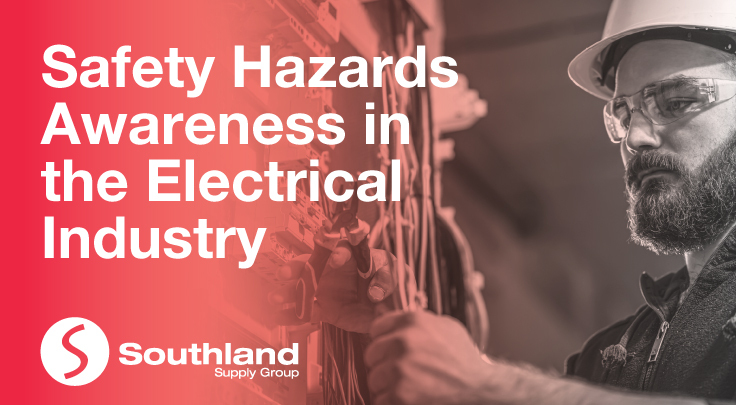
Electricity has long been recognised as a serious workplace hazard, exposing employees to electrocution, burns, shock, fires, and explosions. According to OSHA (Occupational Safety and Health Administration), electrocution is one of the most common hazards in the workplace, especially on construction sites. Identifying electrical hazards can help raise awareness of the risks, their severity, and how electricity can harm employees. Most electrical accidents result from an unsafe environment, unsafe work practices, or unsafe equipment or installation.
Below are some of the most common electrical hazards in the workplace and tips on what you can do to lessen these risks:
Overhead Power Lines - Overhead powered and energised electrical lines have high voltages that can cause major burns and electrocution. It is important to maintain a minimum of 10 feet from overhead power lines and nearby equipment. It is also crucial to do regular site surveys to ensure that nothing is stored under overhead power lines. Installing safety barriers and danger signs to warn workers of the hazards present in the area may also be an option in some situations.
Damaged Tools and Equipment - Damaged electrical tools and equipment can be a risk of electrocution. It is important for workers not to attempt to fix or repair anything unless they are qualified to do so. Workers can check for cracks, cuts, and abrasions on cables, wires, and cords, and if any defects are found, the equipment must be labelled using an “out of service” caution tag and taken out of service. Lockout/Tagout procedures should be always performed before commencing electrical maintenance and repairs.
Insufficient Wiring and Overloaded Circuits- Using wires of inappropriate size for the current may result to overheating and fires in electrical equipment. It is essential that wire suitable for the job and the electrical load is used. If using extension cords, make sure you are using an extension cord designed for heavy-duty use, and do not overload an outlet by using adaptors. It is also important to perform regular fire risk assessments to identify areas at risk of bad wiring or circuits.
Exposed Electrical Parts – There are many potential situations where electrical parts can be exposed, such as temporary lighting, open power distribution units and detached insulation parts on electrical cords. These hazards can result in potential shock and burns. These items should be secured with proper guarding mechanisms and exposed parts should be immediately repaired.
Wet Conditions - Never operate electrical equipment in wet locations unless you have the proper training and personal protective equipment such as electrical safety boots and arc flash clothing. Water greatly increases the risk of electrocution, especially if the equipment has damaged insulation.
Improper Grounding – Improper grounding of equipment is one of the most common OSHA electrical violations. By implementing proper grounding, you can eliminate unwanted voltage and reduce the risk of electrocution. Never remove the metallic ground pin from a plug, as it is responsible for returning unwanted voltage to the ground.
Damaged Insulation - Inadequate insulation is not only an electrocution hazard but a fire hazard. Be aware of damaged insulation on wiring and cords and report it immediately. Take the equipment out of service until repaired or replaced. Never attempt to just cover the damaged insulation with electrical tape.
Who is at Risk?
Electricians, engineers and overhead line workers are at the top of the list of professionals who are most exposed to electrical hazards. Some of the common tasks that put these workers at risk include electrical installation and repairs, testing of fixtures and equipment, and inspection and maintenance activities. However, people who are indirectly working with electricity like office workers are also exposed to electrical hazards.
While workplace electrical hazard prevention begins with providing in-depth training to qualified electrical workers, it’s greatly enhanced by making sure that workers are equipped with proper personal protection equipment. Generally, the most used electrical safety equipment is insulated tools and PPEs like insulated gloves, mats, safety boots and ladders. For a complete range of safety equipment supplies and personal protection equipment, browse Southland’s range at https://www.southland.com.au/
